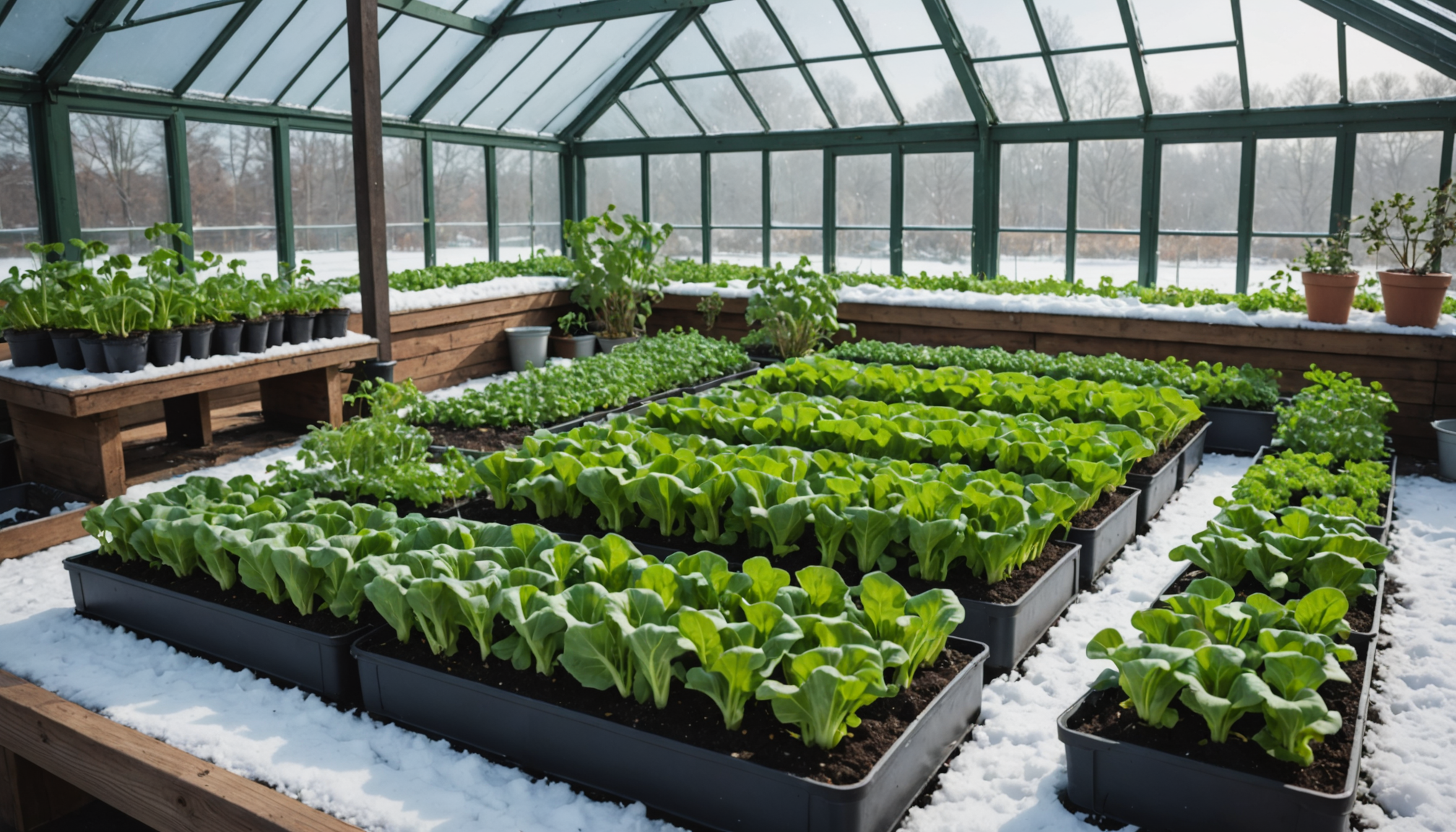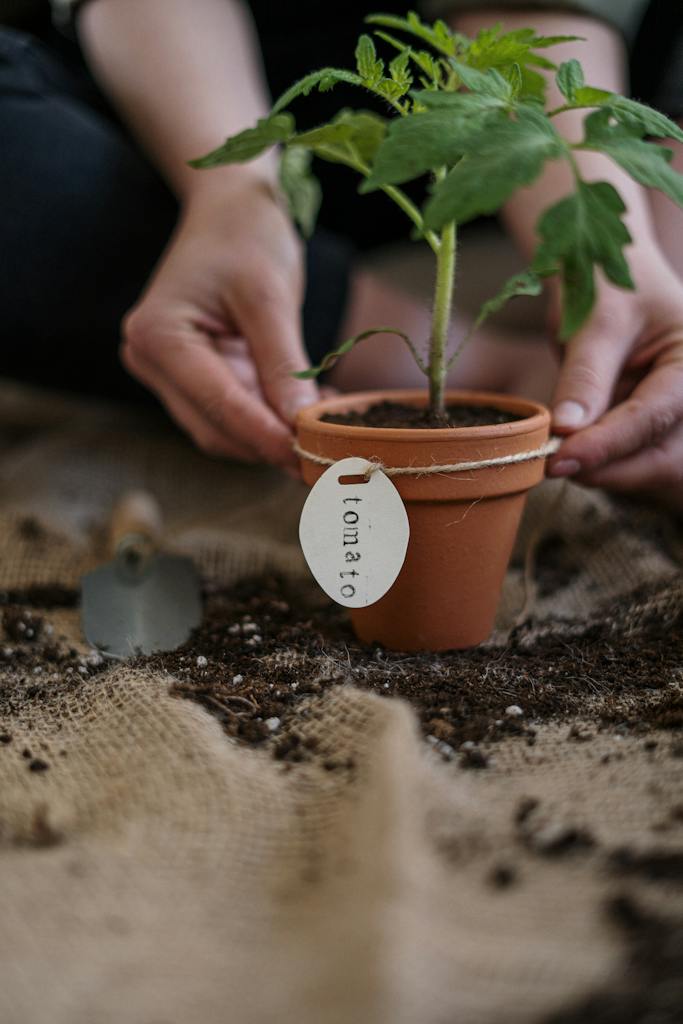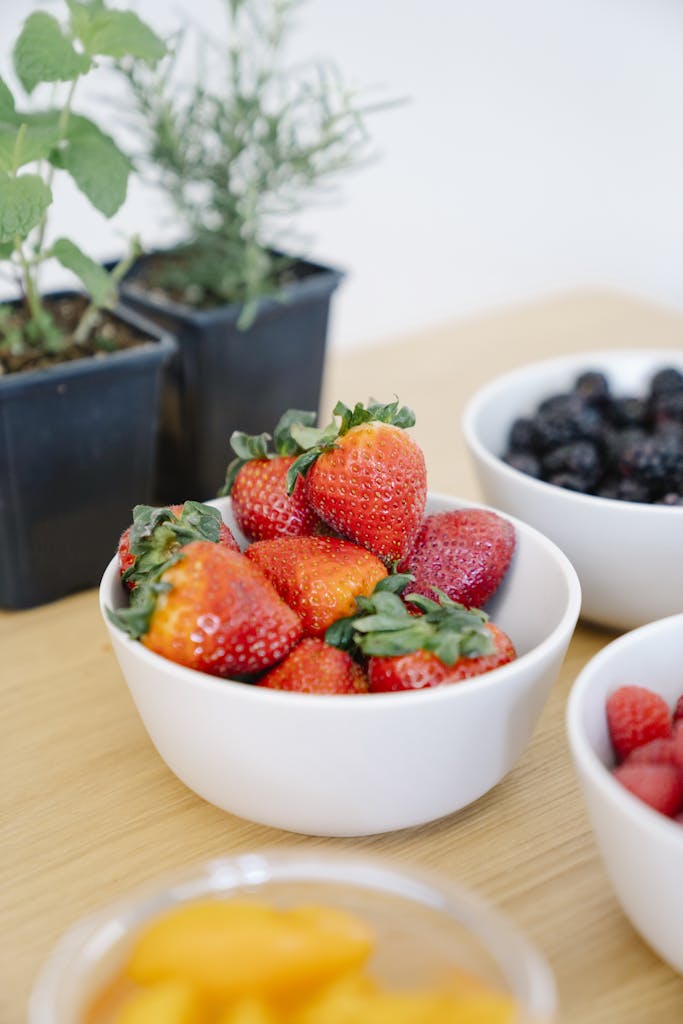When the world outside is blanketed in frost, your garden can still come alive with the magic of the Best Vegetable Seeds for Winter Sowing. Winter sowing not only gets you a head start on your gardening journey, but it also ensures you enjoy fresh vegetables earlier in the growing season. Imagine biting into crisp, homegrown lettuce while your friends are still waiting for spring! Understanding how to effectively winter sow can help you avoid common pitfalls and maximize your garden’s potential.
In this guide, we’ll explore the top vegetable seeds perfect for cold climates, share expert tips for successful sowing, and reveal how to create the ideal conditions for your seeds to thrive. By the end, you’ll be ready to tackle winter sowing like a pro and watch your garden flourish despite the chilly weather. Let’s dive into the exciting world of winter gardening and unlock the secrets of sowing seeds in the cold!
Understanding Winter Sowing
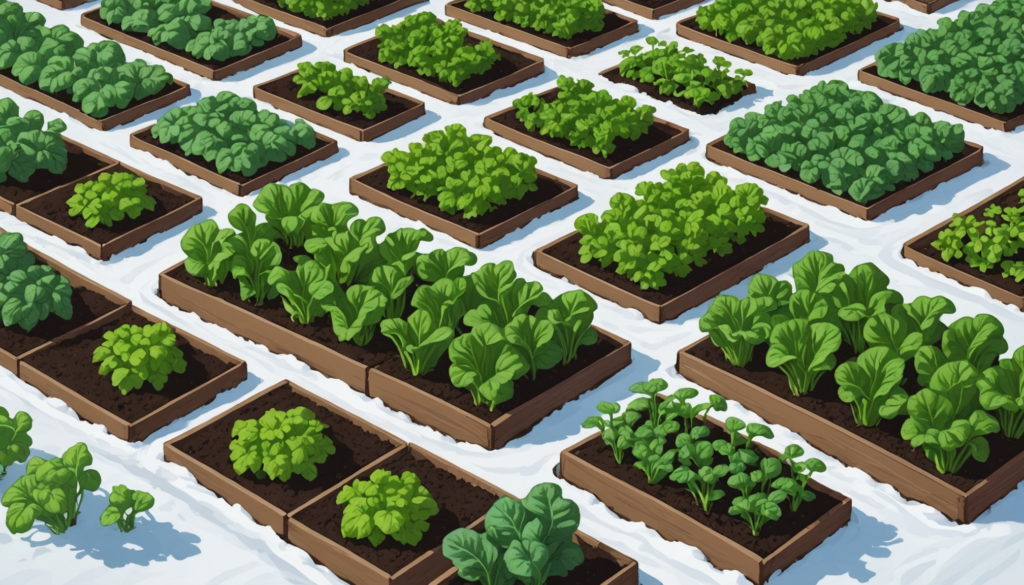
What is Winter Sowing?
Winter sowing is a method of starting seeds outdoors during the winter. In this approach, seeds are planted in containers that function like mini-greenhouses. These containers are placed outside, allowing seeds to germinate naturally as temperatures warm in spring. This technique uses cold stratification, which is essential for many seeds that need a cold period to sprout successfully. It helps gardeners prepare for spring planting while utilizing natural weather conditions.
Benefits of Winter Sowing for Vegetable Gardens
Winter sowing provides several benefits for vegetable gardens:
- Simplicity: This method is easy to follow and requires minimal tools or equipment.
- Efficiency: Gardeners avoid the need for grow lights or indoor space, saving energy costs.
- Strong Seedlings: Outdoors, seedlings grow robustly, without stretching toward light as indoor plants might do.
- No Hardening Off: Seedlings naturally acclimate to outdoor conditions, reducing stress when they are moved outside.
- Prevents Seed Loss: The risk of seeds being washed away or eaten by birds decreases.
- Engaging Activity: This method keeps gardeners active during winter, providing a fun, productive task.
Ideal Conditions for Successful Seed Starting
To succeed with winter sowing, certain conditions are important:
- Containers: Use clear or translucent containers, like plastic jugs or bottles, with drainage and ventilation holes for moisture and air circulation.
- Soil Preparation: High-quality, well-draining soil is critical, as it helps prevent waterlogging that can harm seedlings.
- Sunlight: Place containers in a sunny spot where they receive adequate light throughout the day to maintain the right temperature for germination.
Common Misconceptions about Winter Sowing
Several misconceptions may deter gardeners from winter sowing:
- It’s Too Cold: Many believe that sowing seeds in cold weather is impossible. However, winter sowing is designed specifically for this environment.
- You Can’t Sow Annuals: Contrary to this belief, many annual seeds can be successfully planted in winter.
- All Seeds Need Heat: Some seeds actually benefit from the cold stratification provided by winter sowing.
These points clarify winter sowing and its benefits, making it a valuable method for gardeners aiming to maximize their planting seasons. Wikipedia on Winter Sowing.
The Best Vegetable Seeds for Winter Sowing
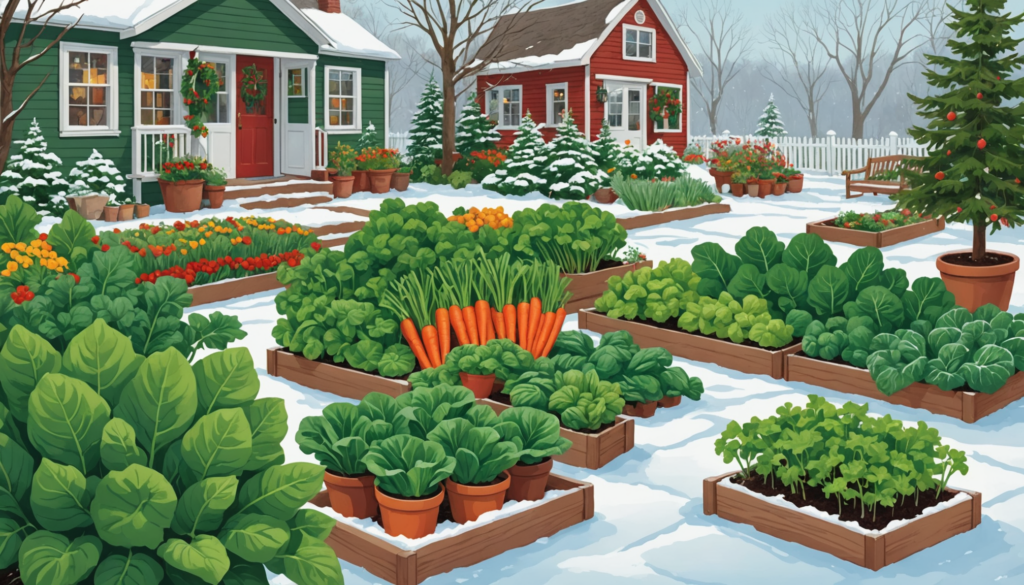
Winter sowing is a great way to kickstart the gardening season. By selecting the right seeds and techniques, gardeners can enjoy a fruitful yield, even in cold weather. This section outlines some of the best vegetable seeds for winter sowing, along with tips on choosing cold-resistant varieties and annual flowers that thrive in winter.
Top Vegetable Seeds to Sow in Winter
Several vegetables do well when sown during winter. Here are some top choices:
- Spinach: This leafy green thrives in cooler temperatures. It grows quickly and can be harvested early in spring. Spinach seeds can be sown directly in the ground or in containers.
- Peas: Peas are an excellent option. They can be planted in late winter and will be ready for harvesting in spring. Peas also add nitrogen to the soil, benefiting future crops.
- Kale and Collards: These hardy greens are frost-tolerant. They can be sown in winter and continue to grow through colder months, making them reliable choices for winter sowing.
- Broccoli and Brussels Sprouts: Both vegetables withstand cold weather conditions. They need a longer growing season, but sowing them in winter gives them the best chance to thrive.
Each of these vegetable seeds contributes to a diverse and healthy garden. They also support local ecosystems by attracting beneficial insects and pollinators.
Choosing Seeds Suited for Cold Temperatures
When selecting seeds for winter sowing, look for varieties known for their cold tolerance. Here are important points to consider:
- Cold-Hardy Varieties: Choose seeds specifically labeled as cold-hardy. Many leafy greens, root vegetables, and certain brassicas are well-suited for winter sowing.
- Seed Dormancy Requirements: Some seeds need cold stratification to germinate. This process mimics the natural winter conditions seeds would face outdoors, ensuring they sprout when the weather warms.
- Local Climate Considerations: Assess the local climate and select seed varieties recommended for that zone. For example, seeds that thrive in zone 4 may not perform well in milder climates.
By carefully selecting seeds that can withstand harsh conditions, gardeners can ensure a successful winter sowing experience.
Varieties of Annual Flowers for Winter Sowing
In addition to vegetables, several annual flowers also thrive when sown in winter. Here are some colorful options:
- Pansies: Known for their vibrant colors, pansies can withstand cold temperatures. They add beauty to a winter garden and bloom early in spring.
- Snapdragons: Another hardy option, snapdragons survive frost and come in various colors. They are perfect for adding vertical interest to garden beds.
- Bachelor’s Buttons: Also called cornflowers, these annuals are easy to grow and provide cheerful blooms. They withstand cold temperatures and attract pollinators.
Including these annual flowers in the winter sowing plan enhances garden aesthetics and promotes biodiversity.
How to Sow Seeds for Winter Gardening

Winter gardening lets gardeners start their growing season early. By following simple steps, anyone can effectively sow seeds, even in cold weather. Here is a complete guide on how to do it.
Step-by-Step Guide to Winter Sowing
- Choose Suitable Seeds: Select cold-hardy seeds such as beets, broccoli, and swiss chard. These plants can withstand cold and thrive in early spring.
- Prepare Containers: Use recycled containers like plastic jugs, soda bottles, or milk cartons. Ensure each container has drainage holes to prevent excess water and keep soil moist without becoming soggy.
- Fill Containers with Quality Soil: Use a well-draining seed-starting mix. This soil type promotes good aeration and moisture control. Avoid heavy garden soil, as it can retain too much water and suffocate the seeds.
- Sow Seeds: Place seeds in the soil according to package instructions. Typically, seeds should be spaced about an inch apart and lightly covered with soil.
- Place Containers Outdoors: Find a sunny spot in the yard to set the containers. This ensures they receive enough light, which is essential for germination.
- Monitor Conditions: Regularly check moisture levels. The soil should remain damp but not soaked. Also, ensure containers do not freeze solid, as this can harm the seeds.
Preparing the Right Soil for Your Seeds
Choosing the right soil mix is vital for seedling success. A high-quality seed-starting mix is recommended as it provides necessary nutrients without being too dense.
- Characteristics of Good Soil:
- Lightweight: The soil should be easy for tiny roots to push through.
- Well-draining: This property ensures excess water does not drown the seeds.
- Moisture-retaining: It should hold enough water for the seeds to germinate.
Mixing in compost can also enrich the soil, providing essential nutrients for growing seedlings.
Using Containers: Jugs and Greenhouses
Containers are crucial in winter sowing as they act like mini-greenhouses. Here are some tips for choosing and using containers effectively:
- Types of Containers:
- Plastic Jugs: Clear or translucent jugs are ideal because they allow light to enter while providing warmth.
- Greenhouses: Small greenhouses can also be effective, creating a controlled environment that helps maintain humidity and temperature.
- Preparation:
- Drainage Holes: Ensure all containers have drainage holes to prevent soil oversaturation.
- Ventilation: In containers without lids, consider using a cover during extremely cold weather to enhance the mini-greenhouse effect. Remove the cover on sunny days for airflow.
Tips for Successful Winter Sowing

Understanding Temperature and Timing for Sowing Seeds
Winter sowing works best when gardeners understand temperature and timing. The right time to start is when temperatures consistently drop below freezing, usually in late winter or early spring. During this period, seeds are sown in containers that act like mini-greenhouses. These containers let seeds benefit from warming soil temperatures as spring arrives. It is essential to monitor air temperature since seeds require cold stratification for optimal germination.
Aim to sow seeds in the third week of February or early March. This timing keeps seeds dormant until the temperatures rise, allowing them to sprout as soon as conditions improve.
Maintenance Tips to Help Your Garden Thrive
Proper maintenance ensures winter-sown seeds stay healthy. Here are key maintenance tips:
- Drainage and Ventilation: Ensure containers have plenty of drainage holes. Good drainage prevents water pooling, which can cause root rot. Proper ventilation allows air circulation, reducing mold risk.
- Moisture Monitoring: Containers can dry out quickly in winter. Regularly check soil moisture levels and water when necessary. Aim for a moist but not soggy mix.
- Remove Snow: Gently remove any snow accumulation from containers. Heavy snow can damage seedlings or crush the containers.
Following these maintenance tips promotes strong seedling growth for a successful spring.
Common Mistakes to Avoid When Growing Winter Vegetables
While winter sowing is simple, avoiding common mistakes can enhance success. Here are pitfalls to watch out for:
- Over-sowing Seeds: Avoid planting too many seeds in one container. Following recommended sowing rates prevents overcrowding, which can weaken plants.
- Using Non-Translucent Containers: Seeds need light to germinate. Using opaque containers can hinder growth. Choose clear or translucent containers to allow adequate light access.
- Neglecting Drainage: Without proper drainage, roots can drown. Always ensure containers have drainage holes to prevent waterlogging.
Scheduling Your Winter Sowing
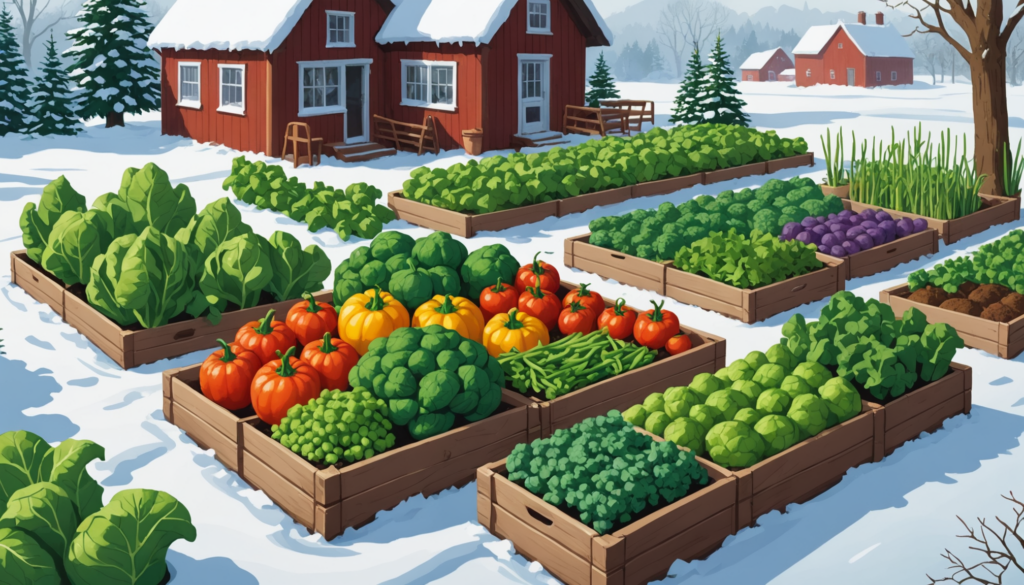
Creating a Practical Sowing Schedule
A practical sowing schedule is crucial for successful winter gardening. Gardeners should first understand their local climate and hardiness zones. The USDA Plant Hardiness Zone Map helps determine the right time to start sowing seeds. Seeds can typically be planted outdoors when nighttime temperatures stay above 20°F (-6°C), enabling them to germinate in spring.
Follow these steps to create a sowing schedule:
- Research Local Climate: Identify when the last frost occurs. This information is key to timing your sowing.
- Plan for Different Seeds: Each seed type has unique germination needs. Cold-hardy vegetables like spinach, kale, and cabbage endure colder temperatures better than others.
- Use a Calendar: Mark important dates, such as sowing dates and expected germination times. This helps keep track of planting and maintenance.
By adhering to this schedule, gardeners can provide their plants with the best start in winter.
Tracking Growth Progress for Optimal Results
Monitoring growth is essential for effective winter sowing. Gardeners should regularly check their containers for the following:
- Germination: Watch for seed sprouting, which typically occurs within 1-3 weeks, depending on the seed type and conditions.
- Moisture Levels: Keep the soil moist but not soggy. Adjust watering as needed to maintain ideal moisture levels.
- Light Exposure: Ensure containers receive enough sunlight. If using translucent containers, position them to get plenty of light throughout the day.
Using a simple journal or digital app can help track plant progress. Recording observations about growth provides valuable insights for future sowing seasons.
Resources and Tools to Help You Succeed
Having the right resources and tools simplifies winter sowing. Essential items for winter gardening include:
- Containers: Utilize translucent containers, like plastic jugs or food containers. These allow light while protecting plants from harsh weather. Ensure they have ample drainage holes.
- Soil: High-quality potting soil or a seed-starting mix supplies necessary nutrients for seedlings. The soil should retain moisture while allowing excess water to drain.
- Labels: Use permanent markers or plant markers to identify each container with the seed type and sowing date. This helps track different varieties and their growth.
Consider adding mini-greenhouses or cold frames for extra protection against cold weather. These structures create a cozy space for seedlings to thrive during winter.
Expert Recommendations

Expert gardeners provide valuable insights for successful winter sowing. These recommendations focus on selecting the right seeds, understanding environmental factors, and common practices that can lead to thriving winter gardens.
Start with Hardy Crops
Experts recommend beginning with hardy vegetables like kale and spinach. These crops thrive in cold temperatures and germinate well during winter. Their flavor often improves after frost, making them ideal candidates for winter sowing.
Use Well-Draining Containers
Choosing the right containers is essential. Experienced gardeners suggest using well-draining containers to prevent water from pooling around seeds, which can cause rot. Containers such as 2-liter soda bottles or plastic jugs with drainage holes promote airflow and moisture balance, creating a mini-greenhouse effect.
Timing is Key
Timing is crucial for successful winter sowing. Most seasoned gardeners advise starting seeds in late winter, around mid-March in colder climates. This timing ensures seeds germinate as temperatures rise in early spring. A simple sowing schedule can help track planting times, ensuring optimal growth.
Understand Common Misconceptions
A common misconception is that only specific seeds can endure cold weather. In fact, many vegetables can thrive in these conditions. With proper planting timing and suitable environments, gardeners can successfully grow a wider variety of seeds than they might expect.
Avoid Overwatering
Overwatering is a frequent mistake made by new gardeners. Experts recommend closely monitoring soil moisture. Instead of keeping the soil saturated, allow it to dry slightly between waterings. This approach prevents mold and promotes healthier seedlings.
Seek Resources and Community Support
Joining local gardening clubs or online forums can provide essential support and resources. Many experienced gardeners share tips and personal experiences, helping others learn from their successes and challenges. Websites like the WinterSown Educational Foundation offer valuable guides and community insights for enhancing the winter sowing experience.
Conclusion
Winter sowing is a fantastic way to grow delicious vegetables right in your garden! By understanding what winter sowing is and the best vegetable seeds to use, such as hardy plants like bok choi and carrot seeds, you can get a head start on your gardening adventure. Remember to choose seeds suited for cold temperatures and prepare your containers properly for successful germination.
As you dive into your winter sowing project, keep in mind the tips for maintaining your plants and avoiding common mistakes. With a bit of patience and care, you’ll be rewarded with a thriving garden come spring. So grab those 2-liter containers and start your winter sowing journey today! Happy gardening!
FAQs
1. What are the best practices for winter sowing?
Successful winter sowing involves using the right containers and sowing at the appropriate time. Any clear container with drainage holes, such as plastic jugs or bottles, can be used to create mini-greenhouses. Start sowing when outdoor temperatures are consistently cold but above freezing, typically from late winter to early spring. Monitor moisture levels regularly to ensure the soil remains moist but not waterlogged. By following these best practices, gardeners can significantly increase their chances of successful germination and produce strong, healthy seedlings.
2. How do I know when to start sowing seeds in winter?
The best time to start sowing seeds in winter is when temperatures are consistently cold but above freezing. This allows for natural cold stratification, a process that helps many seeds germinate. Check local weather patterns and observe temperature trends. Aim for a period of prolonged cold weather without severe frost, typically when average air temperatures hover around freezing. As a general guideline, the third week of February is a good starting point for many cool-season crops in many regions. By carefully monitoring climate and temperatures, gardeners can effectively time their winter sowing for optimal results.
3. Can I use regular potting soil for winter sowing?
Regular potting soil is generally not recommended for winter sowing. It tends to retain too much moisture, which can lead to root rot in the cold temperatures typical of winter. A well-draining seed-starting mix or a high-quality potting mix specifically formulated for winter sowing is a better choice. These options provide better drainage and air circulation, crucial for seed health during the winter months. Using pre-moistened seed-starting mixes can save time and ensure the soil has the right moisture content from the beginning.

